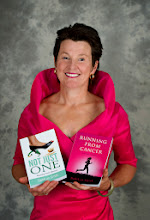The best news is it didn't hurt! There was no pain, no blood drawn, no contortoning my limbs into pretzel positions.
Being sent for a bone density scan can be as easy as going to the salon. Probably easier.
For me, getting to Prince George, a 3.5 hour drive down the highway, for the date I was given was the biggest issue. But here in the mighty north we have a solution called the Northern Health bus, where for the meager price of $10 one way, I was picked up, suitcase in hand, by the driver of a very large bus, complete with total wheel chair accessibility and gaped seating space and washroom, and left to sit back and enjoy someone else's driving down the highway.(www.northernhealth.ca or 1-888-647-4997)
What pleasure! I sat far enough back in the bus to not notice what was happening between the driver and the road. I pulled out my book, snuggled in and lost myself to someone else's world for a bit. A quick stop for another passenger (that made three of us) in Vanderhoof and we continued along, arriving in P.G. well ahead of the estimated four hour journey.
With the bus getting in at 7 pm, I had to overnight to make my appointment the following day at 11 am. This might be an issue with some, but there are hotels/motels in PG that will give you a medical discount for the asking.. And there's always the new Canadian Cancer Society's Kordyban Lodge that will take cancer related guests for $45 a night and non cancer related guests for $55 a night, three meals included.(Call them for info and reservations at 250-562-3535)
I was fortunate to stay with family overnight.
So, refreshed and full from an amazing power shake my sister-in-law made, I arrived at the University Hospital of Northern BC. A volunteer in a pink jacket pointed upstairs, explaining the X Ray department was that way and down the corridor.
I arrived at the X Ray department and took a number where once called, I was checked-in and handed a form to give up at my next stop which was further down the same hallway.
Because I had a zipper in my pants, I was given a pair of flannel shorts to change into before being ushered into a darkened, small bedroom-sized exam room. I sat on the paper-lined stretcher/bed and answered questions about whether I had abstained from consuming extra calcium tablets before this exam as I'd been told.
I was then weighed and measured for height, an important step as you will soon see.
After lying down on the padded slab, a large cloth-covered box was placed beneath my knees, probably to force my spine further into the slab? A large white curved-headed machine came to life and like a scanner on a printer, it whirred as it moved slowly along the direction of my torso from my knees to my belly button. The head itself was a good foot and a half away from my body. No enclosure like in an MRI or something surrounding you like in a CT scan.
The process was repeated with the box removed and my legs lying flat in a divider to space my legs a certain distance apart.
Easy, peasie, possibly more so because this was my second bone density scan. I had one two years ago to set "a marker" or a base for doctors to go by while I am on the cancer adjuvant therapy Letrazole. Letrazole is an anti-estrogen pill that can mess with your chances of osteoporosis and should be monitored for this.
I took a minute to discuss what the tech immediately could see from the results on her computer screen. A four cm change in my height kind of shocked me a bit. I am no longer the 5'7 I have bragged about. I am a shorter 5'6 and change and going down. When did that happen?
So when I turned 40 and then 50 there was more to complain about than just memory, hearing and energy loss. I am the Shrinking Woman. Now what would be the positive spin for this?All I can think of is losing my hard earned privilege of riding the bumper cars at the Fall Fair. You have to be taller than the sign to get on!
Positive. Positive. Give me a minute, I'm still thinking...
Nope, maybe YOU can tell me what is positive about getting smaller? Alice in Wonderland found it handy. Surely we can too?




.jpg)

